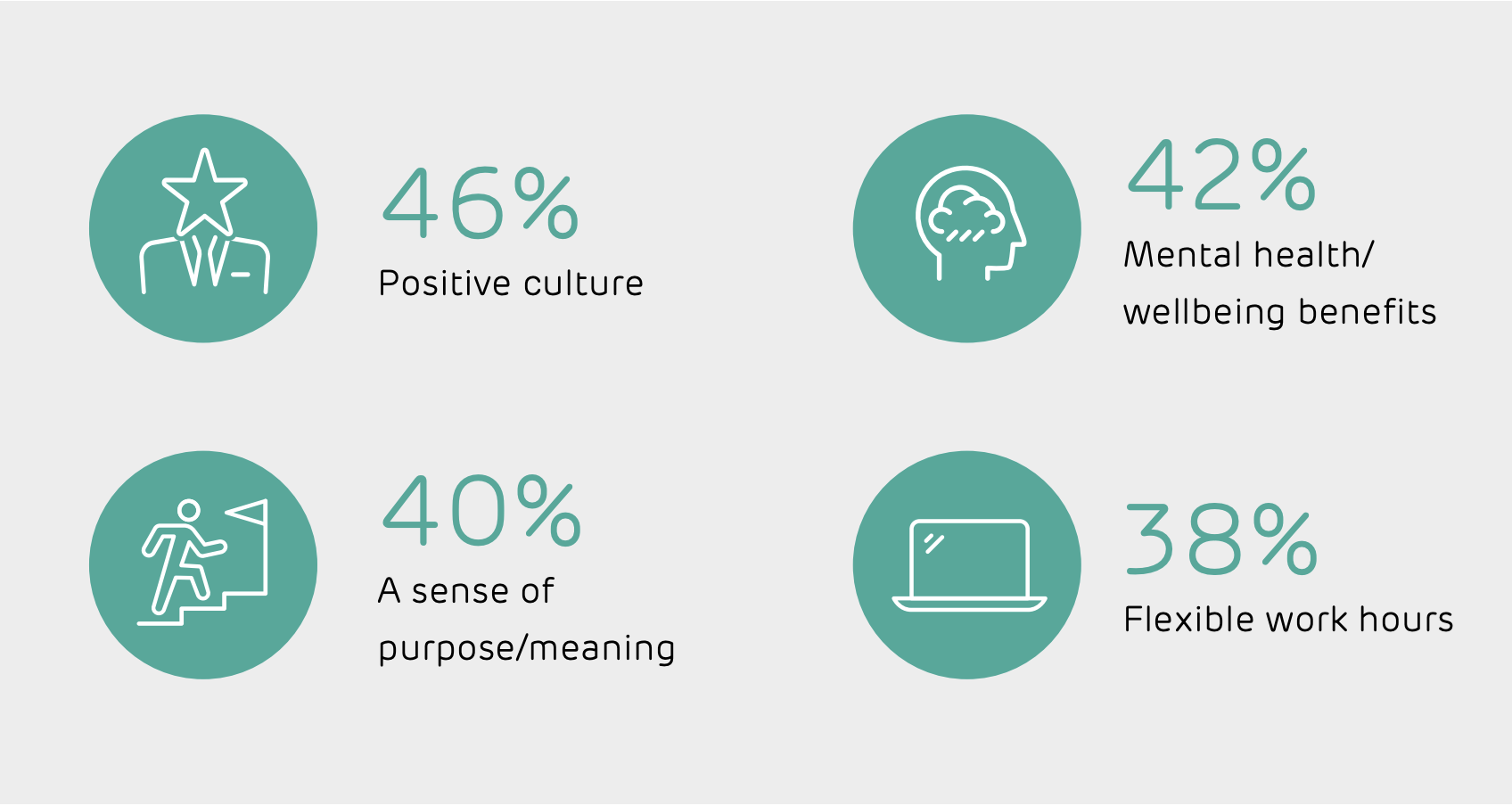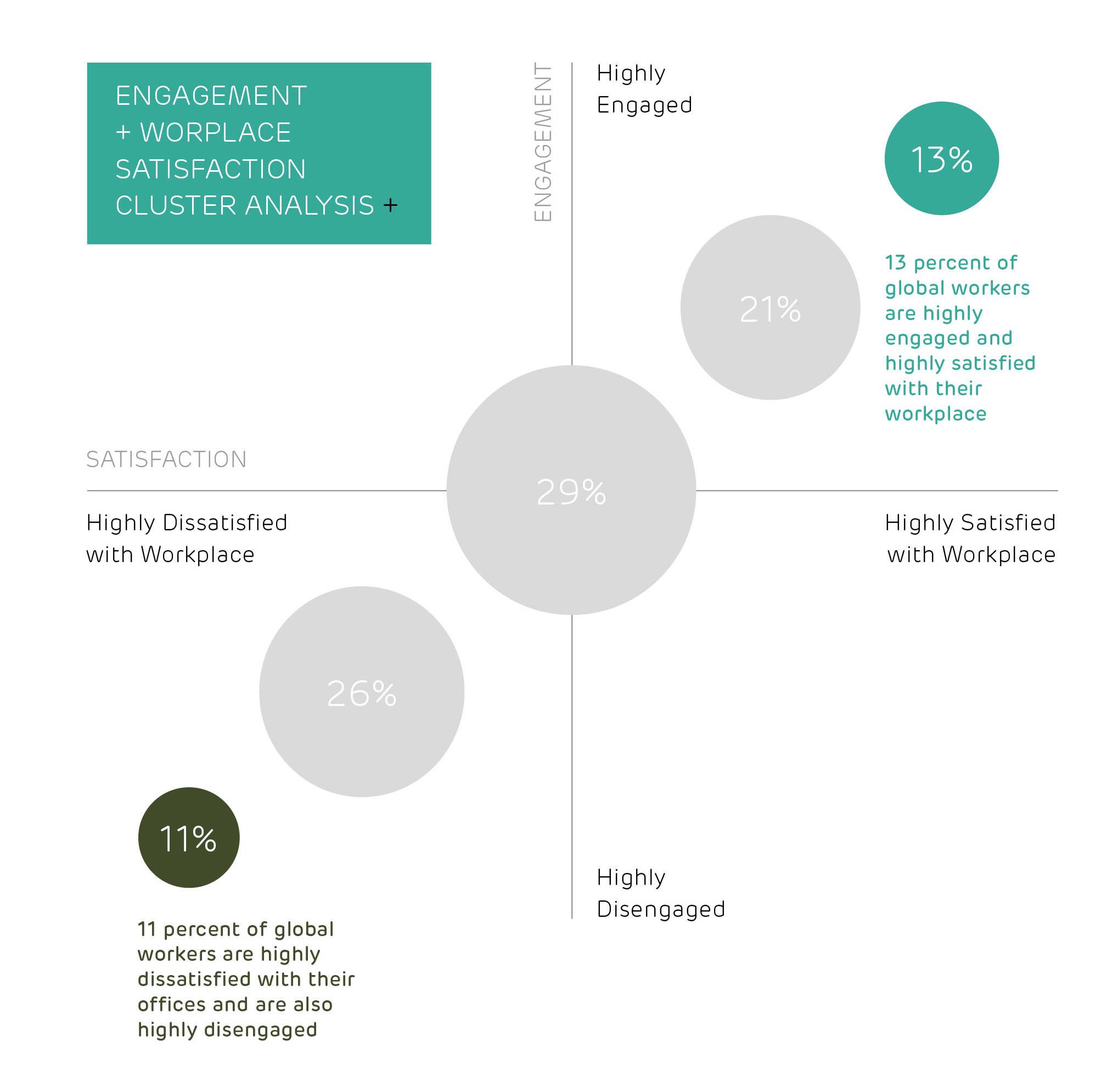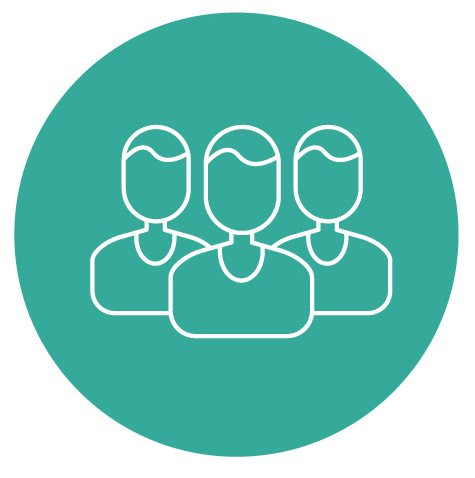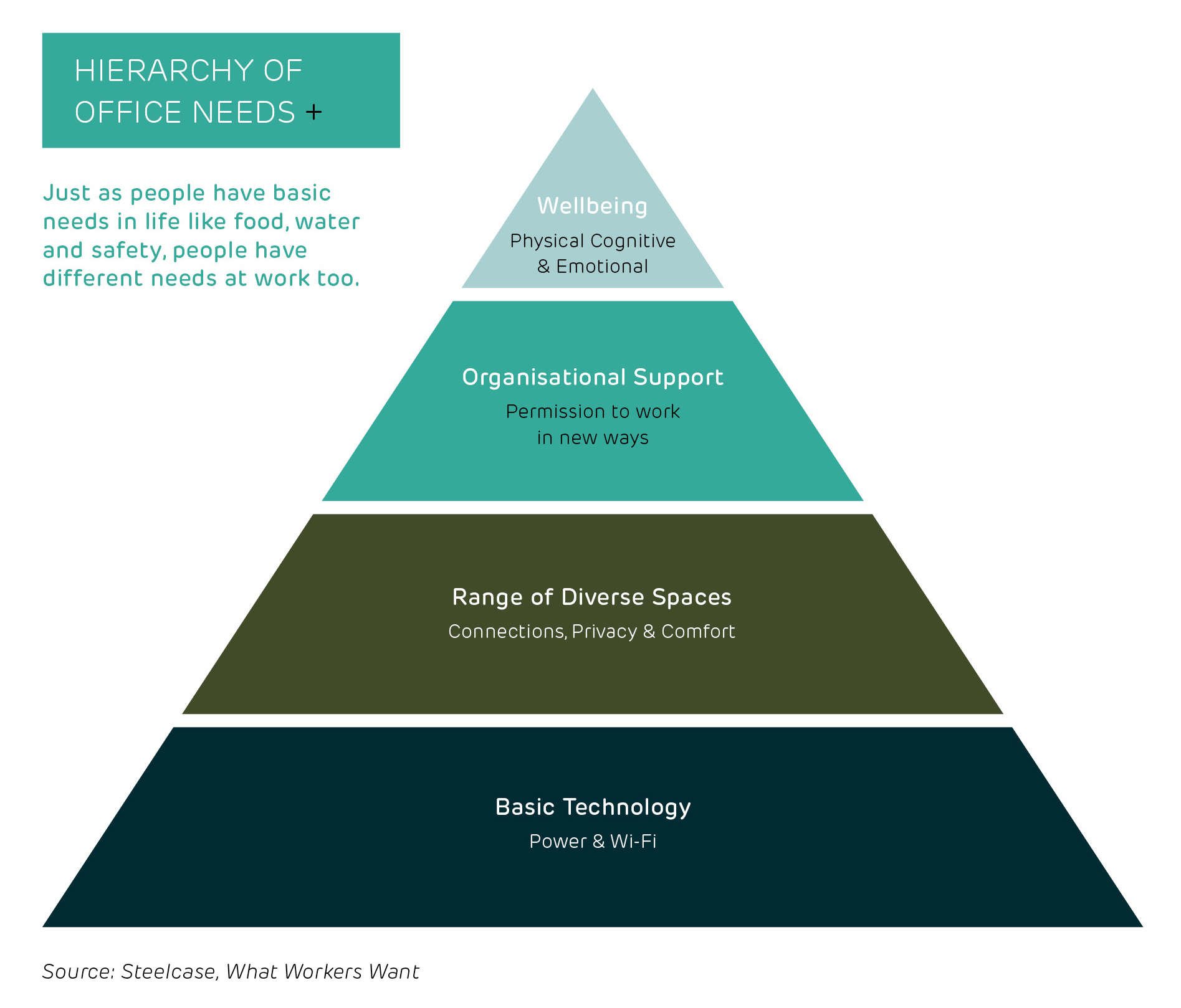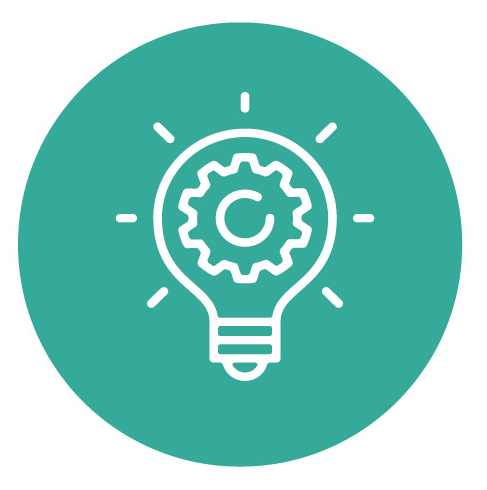1. Design for more effective teamwork - hyper collaboration and agile working
In the past, teams typically worked in linear ways. Projects were planned, teams met, tasks were allocated, completed, approved and handed off. When problems arose they were reported and escalated for resolution.
But with the rise of ‘Agile’ in the workplace all this has changed.
Led by the demands of a growth-driven global economy and a slew of disruptive technologies, companies are searching for a competitive edge through more iterative teamwork, innovation and greater customer focus.
This is an era of hyper-collaboration, where breakthroughs are made through cross-functional co-operation, intense collective thought and more interactive development processes.
What is Agile working?
Agile is a method of working pioneered in software development as a way of managing complex projects in a highly responsive way. Agile is defined by the shape and rhythms of its various ‘rituals’ and working practices that foreground collaboration and accountability. Agile is intended to make teams more productive, innovative and customer-centric.
What is ‘Agile Inspired’ Working?
Thanks to its success in delivering greater innovation in software, ‘Agile inspired’ working has now been adopted by other business functions beyond development.
And we see its influence operating in many different teams, companies and sectors - in the daily standups, group planning and cross-functional collaboration that happen every day in countless organisations around the world.
In fact, 80% of companies recently surveyed by the Harvard Business Review stated that they had adopted agile working practices in at least some parts of their organisation.
‘Agile inspired’ working presents unique opportunities for businesses. It encourages teams to:
- Work in an iterative fashion through interactive planning, daily stand up and constant review - making teams more creative, responsive and accountable.
- Develop better solutions by closer and constant collaboration between individuals and clients
- Help teams spot problems and quickly change direction if customer or market needs change
But for workers to thoroughly engage with this kind of Agile thinking they need a radically different setting from the traditional ‘fixed’ office space.
Adapting to the agile challenge
These kinds of working methods demand truly flexible workspaces if they are not to undermine their objectives of increasing efficiency and maintaining collaborative momentum. Agile demands:
- The right balance of spaces for team and individual work
- The opportunity to meet, collaborate, ‘break out’ and reform fluidly and easily
- Stand up locations need to be close enough to individual workstations, so that flow and concentration is not lost or broken
- Workstations need to be capable of shutting out noise or distraction when required
- Teams need quiet spaces where individuals can retreat for inspiration and deep thought
- The team need spaces where groups can relax together
Building better and more engaged teams through user-centred office design
When Steelcase observed modern design teams at work they described ways of working that were highly ‘agile’.
They described a never-ending exchange of ideas and information, peer-to-peer learning and greater connection with customers.
Teams were working in rapid cycles of iteration, tasks were interdependent and their projects fluid.
At times, there was clearly a great need for teams to work together on benches or desks, so they could build cohesion and work faster on particular parts of a project.
But individuals also needed time to retreat from the group to absorb information and process their own ideas.
At other times there was a need to create spaces where people could meet, ‘sit, stand, draw on boards, gesture, move materials and objects.’
There are many flexible office furniture solutions on the market that are directly addressing these kinds of agile requirements, and helping create seamless ebb and flow between individual work and teamwork:
Designing for agile teams
Teams can roll together standing height tables to create one large work surface for a design thinking workshop. Screens can be used to hold images in place for consideration and discussion.
Freestanding screens can create separation from the team, allowing individuals to focus when they need to and attend to their personal needs.
2. Design for creativity
Creativity is a deeply valuable currency in the modern economy. It is the powerhouse for companies who need to differentiate themselves and their offerings in a crowded and hypercompetitive market place. 72% of people at work today believe their future success depends on their ability to be creative.
The lesson from Agile is that every idea can evolve and be improved on, iterated and expanded when the right team works together to develop it and bring it to fruition.
In the modern workplace, creativity is productivity - it is a collective pursuit, but it is also strongly linked with a sense of personal and professional fulfilment.
So, how can you design your workspace to support creativity - and keep the people in your business engaged and contributing to its success and innovation in every way?
Three ways to design for creativity
1. Create environments that stimulate an emotional connection.
- Use ambient and thoughtful design elements to inspire thinking and foster team culture.
- Build a welcoming environment and personal connection to space with authentic design elements, artefacts and materiality.
- Design for physical and emotional wellbeing through posture options that allow for comfortable proximity to other people and content sources. Keep sightlines to screens open and make eye to eye contact possible for colleagues.
- Consider the space's size, boundaries, materials and the direction of microphones and speakers for the best audio for both in-person and remote participants when collaborating in mixed presence teams.
2. Nurture creative confidence
- Provide co-creation tools, such as virtual whiteboards, that allow everyone including remote participants to contribute to and interact with content.
- Support the visibility and tangibility of ideas by using partitions and walls as postable, writing surfaces to guide the creative process.
- Enable both remote and co-located participants to move around the room - mobile furniture and displays will help.
- Enable privacy and control over the environment to provide a “safe haven” where new ideas can incubate
3. Build a fluid creative ecosystem
- A variety of spaces should support individuals and teams as they cycle through the creative process, hosting moments of individual exploration, cognitive resting, social connection, co-creation and evaluation.
- Build an ecosystem with options so people can choose where and how to work. A range of spaces and devices is necessary to support the diverse stages of creative work.
- Scale the ecosystem with separate spaces or zones for specific individual, team and organisational needs.
3. Design for technology
Technology needs to facilitate, not interrupt or frustrate. It needs to be built sensitively into our working environment in order to help us work more seamlessly together.
Tech is a constant source of frustration and disengagement in the modern office.
According to Steelcase, team meetings frequently start with malfunctioning technology or some difficulty related to sound or sightlines for the people present.
Remote teammates often struggle to fully participate because of poor office design - including acoustics or even the position or field of vision of the webcam.
In the crucial collaborative processes of design and development, the limitations of older, existing technology are also glaringly apparent.
Workers huddling around desks with small screens cannot always stand back and review creative options on a screen, or easily ‘take over’ a device to make edits or add detail.
Rooms where technology is used also need considerable thought in their design and furnishing to support the best results for teams.
Researchers found that particularly soft and low slung chairs discouraged team members from standing and interacting with digital whiteboards or screens.
Badly designed or poorly placed desks could present physical barriers to interaction with shared technology.
Design for a better experience of technology
Provide seamless connectivity between spaces to support the flow of information and experience from tools-to-tool and space-to-space.
This means using cloud-based platforms for individual and team tools - helping content move with people as they transition between zones.
Where mobile technology facilitates flexible working both inside and outside the workplace - employees find themselves able to concentrate and collaborate better and more seamlessly. Individuals and teams thrive as they work together in a variety of settings, some joining from the office and others remotely.
Braiding the physical and digital
As more companies transition to hybrid work, people will be collaborating with a blend of in-person and remote teams more than ever before.
To create the best possible hybrid work experience, offer a range of spaces and technology solutions to easily support diverse types of collaboration - from a planned creative session to an impromptu one-on-one and everything in between.
Steelcase research reveals three insights for supporting better hybrid collaboration using diverse technology and high-performing spaces:
- Strive for equity and inclusion despite location - e.g. develop more intentional shared etiquette and protocols
- Design experiences across a range of settings that are human and engaging - e.g. arrange remote and local participants and digital and analog content to ensure equal participation.
- Design a variety of intuitive virtual and physical experiences that are easy to navigate - e.g. make sure all participants have clean sight lines to people and content.
It’s these sorts of details that have to be a priority for organisations who are concerned about their ability to recruit and retain the right talent.
They need to meet employees expectations about the ease with which they can lever tech to help them work.




